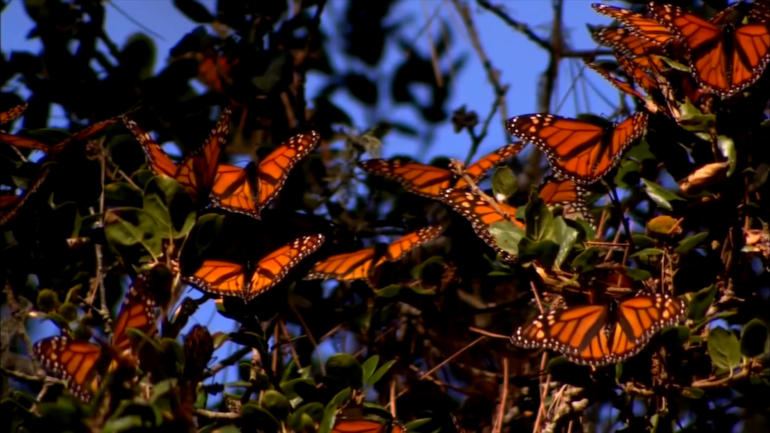California’s Monarch butterflies are in trouble. Every year, millions migrate along the coast from November to March.
But at the last count researchers got a big shock, an 86 percent decline.
CGTN’s Phil Lavelle reports.
“Last year, throughout all of California and all of the overwintering sites, we had 192,000 monarchs. This year, we had 28,000 monarchs. It is a shockingly low number in just between two years,” butterfly counter Charis Van Der Heide said.
The research was carried out by the Xerces Society.
Every Thanksgiving and New Year, it organizes counts with volunteers to gauge how the Monarch is doing.
Back in 1981, it counted more than a million in the same tests.
“We’re not exactly sure what’s causing this sharp decline. But we estimate that its habitat loss and degradation of overwintering sites and breeding sites throughout the west and pesticide use plays a role. Herbicide use that kills milkweed also plays a role,” Van Der Heide said.
In 2017, Washington State University researchers said the Monarch could be extinct within decades if no action is taken
The fear is that this could be the beginning of the end for this iconic species.
“It was just recently estimated that if the population reaches below 30,000 – which it is, it’s at 28,000 – the population is vulnerable to collapse. It could be at a quasi-extinction level.
It’s possible that they won’t be able to recover from this such low population this year, but I still like to have hope,” Van Der Heide said.
 CGTN America
CGTN America

